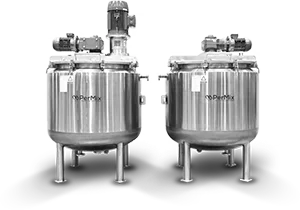Industrial Mixers
PerMix News & Updates


In this blog, we will explore the benefits and applications of using microwave technology for the drying process during the mixing of powders in battery applications. As the demand for efficient and environmentally friendly battery technologies continues to grow, finding innovative ways to improve the manufacturing process becomes crucial.
Before we delve into the specifics of microwave technology, let’s first understand the significance of drying during the powder mixing stage in battery production. Drying plays a vital role in removing moisture content from the powders, ensuring optimal performance and stability of the battery cells.
Enhanced Efficiency and Uniformity with Microwave Drying
Microwave technology offers a highly efficient and uniform drying method for powders in battery applications. By utilizing electromagnetic waves, microwaves generate heat directly within the particles, resulting in rapid and even drying. This not only saves time but also improves the overall quality of the battery materials.
Furthermore, the use of microwave technology enables precise control over the drying process, allowing manufacturers to achieve the desired moisture content with greater accuracy. This level of control is crucial in maintaining consistent battery performance and reliability.
Advantages of Microwave Drying in Battery Applications
There are several key advantages to using microwave technology for drying during the powder mixing stage in battery applications:
Microwave drying finds extensive use in various battery manufacturing processes. It is particularly beneficial in the production of lithium-ion batteries, where the quality and consistency of the electrode materials are crucial for optimal battery performance.
Additionally, microwave drying is employed in the manufacturing of other battery types, such as nickel-metal hydride (NiMH) and nickel-cadmium (NiCd) batteries. The versatility of microwave technology makes it suitable for a wide range of battery applications.
In conclusion, the utilization of microwave technology for drying during the mixing of powders in battery applications offers numerous advantages in terms of efficiency, quality, energy savings, and waste reduction. As the battery industry continues to evolve, incorporating innovative drying methods like microwave technology will play a significant role in enhancing the overall performance and sustainability of battery materials.